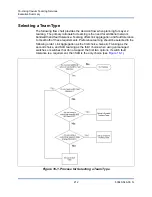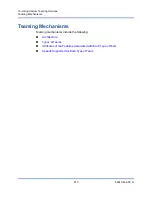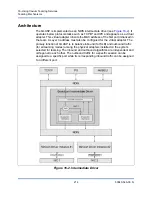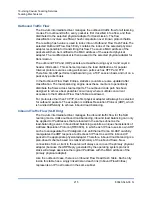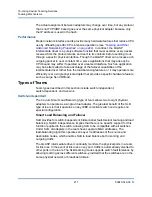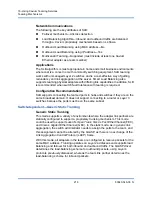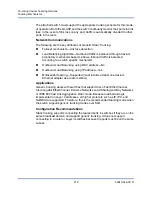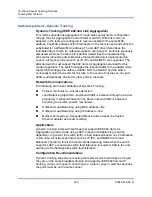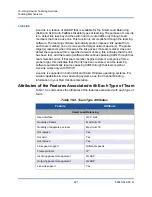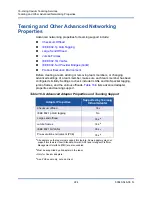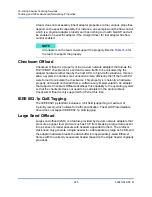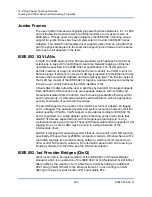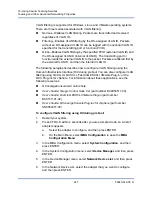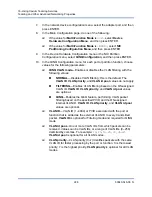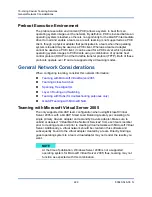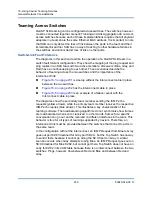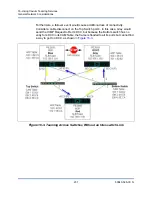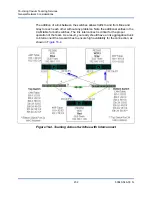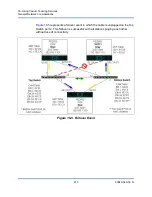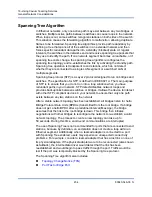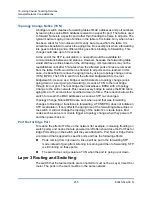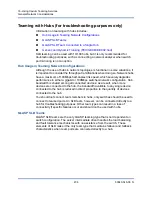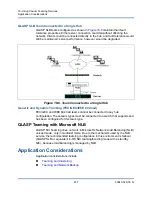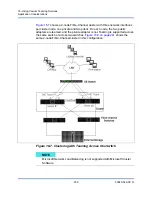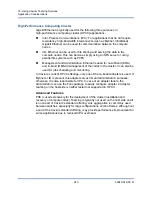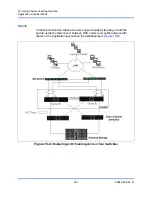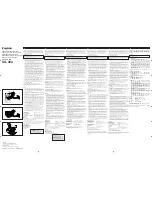
16–Using Cavium Teaming Services
Teaming and Other Advanced Networking Properties
226
83840-546-00 N
Jumbo Frames
The use of jumbo frames was originally proposed by Alteon Networks, Inc. in 1998
and increased the maximum size of an Ethernet frame to a maximum size of
9600 bytes. Though never formally adopted by the IEEE 802.3 Working Group,
support for jumbo frames has been implemented in Cavium 8400/3400 Series
Adapters. The QLASP intermediate driver supports jumbo frames, provided that
all of the physical adapters in the team also support jumbo frames and the same
size is set on all adapters in the team.
IEEE 802.1Q VLANs
In 1998, the IEEE approved the 802.3ac standard, which defines frame format
extensions to support Virtual Bridged Local Area Network tagging on Ethernet
networks as specified in the IEEE 802.1Q specification. The VLAN protocol
permits insertion of a tag into an Ethernet frame to identify the VLAN to which a
frame belongs. If present, the 4-byte VLAN tag is inserted into the Ethernet frame
between the source MAC address and the length/type field. The first two bytes of
the VLAN tag consist of the IEEE 802.1Q tag type, whereas the second two bytes
include a user priority field and the VLAN identifier (VID).
Virtual LANs (VLANs) allow the user to split the physical LAN into logical subparts.
Each defined VLAN behaves as its own separate network, with its traffic and
broadcasts isolated from the others, thus increasing bandwidth efficiency within
each logical group. VLANs also enable the administrator to enforce appropriate
security and quality of service (QoS) policies.
The QLASP supports the creation of 64 VLANs per team or adapter: 63 tagged
and 1 untagged. The operating system and system resources, however, limit the
actual quantity of VLANs. VLAN support is provided according to IEEE 802.1Q
and is supported on a single adapter and in a teaming environment. Note that
QLASP VLANs are supported only with homogeneous teaming and not in a
multivendor teaming environment. The QLASP intermediate driver supports VLAN
tagging. One or more VLANs may be bound to a single instance of the
intermediate driver.
QLASP is designed for operating systems that do not support in-OS NIC teaming,
specifically, Windows Server 2008 R2 and earlier versions. Windows Server 2012
(and later) features its own NIC teaming software, which is recommended over
other vendor NIC teaming software. For information about in-OS NIC teaming or
bonding software for other OSs, see the OS documentation.
IEEE 802.1ad Provider Bridges (QinQ)
QinQ (or Q-in-Q) is an implementation of the
IEEE 802.1ad Provider Bridges
standard, which is an extension of the IEEE 802.1Q VLAN standard. QinQ further
filters traffic by the creation of a VLAN-within-a-VLAN by adding an additional
802.1Q tag (VLAN ID field) to the Ethernet frames. You can configure VLAN
filtering for single physical function (PF) and multiple PFs.

